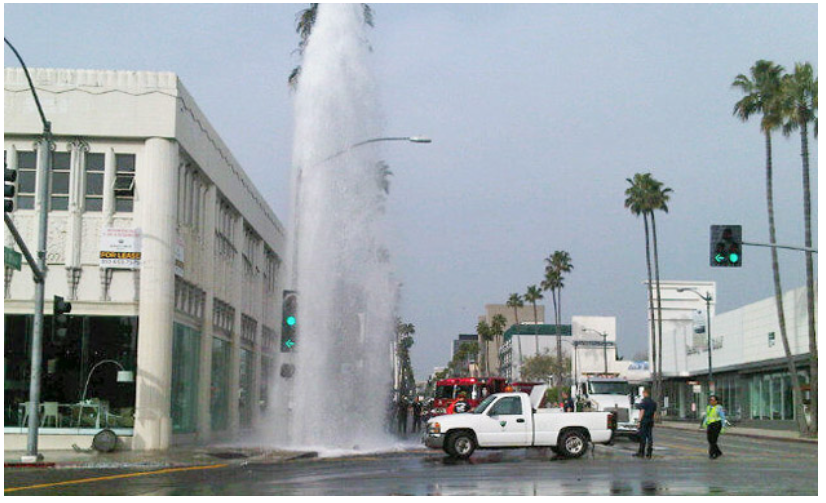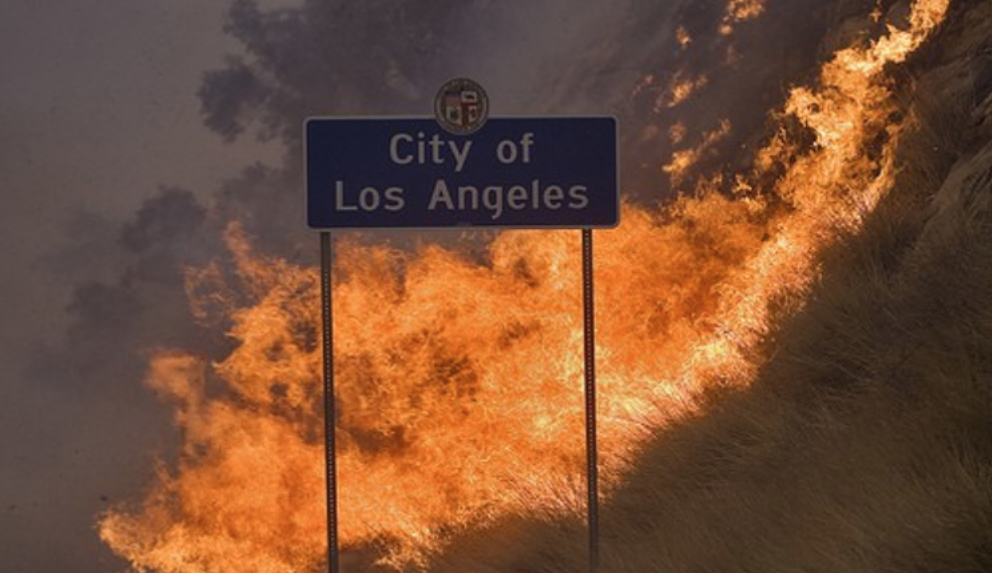CommentsEIGHT MOST READ - Platkin on Planning: LA may be another city in decline, but at least we know what awaits us when we near the bottom:
- Rampant homelessness.
- Highly polluted air, complemented by water shortages.
- Wild fires, heat waves, droughts, sea level rise, and severe storms linked to climate change.
- Brown outs, black outs, burst water mains, broken sanitary sewers, and other infrastructure failures.
- Loss of the urban forest due to negligence, drought, plant diseases, and real estate demolitions and construction.
- Collapsed buildings and shattered lifelines when long awaited massive earthquake(s) finally strike.
- Gridlock for those of who can still afford to drive cars.
What we don't understand well, though, are the planning-related myths that are accelerating this race to the bottom. Even though City Hall decision makers embrace them as conventional wisdom, there are literally no facts to back them up.
Myth 1. Los Angeles is on the verge of another population boom. According to demographer Wendell Cox, Los Angeles has already claimed that its population broke through the 4,000,000 barrier four times, only to have sluggish population numbers stare back at them. In fact, the 1996 General Plan Framework forecast a Los Angeles population of 4.3 million in 2010, and this figure turned out to be 500,000 people higher that the 2010 Census data. In fact, given LA’s anemic growth rates, this 4,300,000 level will probably not be reached until 2040, only 30 years late.
Why? LA’s boomtown era ended when the city ran out of raw land that real estate developers could quickly convert to housing subdivisions, strip-malls, and big box retail. In today’s LA, new, expensive real estate projects must elbow existing ones out of the way, including their rent stabilized apartments and transit dependent residents.
As a result, what is now changing in LA is not the overall number of people, but their economic strata. According to Denny Zane, head of MOVE, the poor are migrating out of Los Angeles, and younger, wealthier newcomers are taking their place. It is this demographic makeover, not overall population growth, that is slowly filling up LA’s new, luxury apartment buildings, but not its busses and subways.
Myth 2. LA’s Zoning is inadequate to meet LA’s housing crisis, so the city must quickly up-zone its privately owned lots. This new, conventional “wisdom” claims that LA was so significantly downzoned by 1986’s Proposition U and the AB 283 zoning consistency program that Los Angeles does not have enough zoning capacity to meet its need for more housing.
Nothing could be further from the truth. The last time the City of Los Angeles calculated its un-tapped zoning capacity, for the 2006 General Plan Framework, it determined that the full buildout population of Los Angeles would be 7.1 million people, based on existing zoning.
Since then, all lots zoned for commercial uses or apartment houses, as well as three manufacturing zones, can have their maximum zoning and population capacity increased by an additional 35 percent or more through LA’s two density bonus programs: SB 1818 and TOC guidelines.
As a result, Los Angeles could, therefore, become a city of 9,000,000 people based on its existing zoning.
But, even if real estate investors chose to develop LA’s existing parcels – most conveniently located on transit corridors - to their maximum legal capacity, the city would implode long before it reached 9,000,000 people. The practical limits imposed by poor maintenance and under-investment in the city’s already maxed-out public services and infrastructure would quickly scuttle any major growth-inducing proposal, such as “transit neighborhood plan” up-zoning schemes.
Myth 3. Building more market and even luxury housing reduces housing costs. The endless calls for massive housing construction to lower costs through “supply and demand” sounds plausible. Unfortunately, building more market housing is not the simple cure its advocates imagine it to be. First, market housing only serves the high end of the housing market, those who can afford small apartments renting at $3,000 per month. Then, when landlords cannot lease these units, they NEVER slash rents to make them affordable. At best, they offer miniscule incentives, such as one year of free parking. Second, at worst, they fill those empty units through short-terms rentals that illegally transform apartment building into hotels, often through AirBnB. Third, to obtain building sites, new apartment construction often requires the demolition of existing housing, including affordable units protected by LA’s Rent Stabilization Ordinance. Fourth, new, high-rent buildings do not suppress rents in adjacent apartment buildings, rather they pull them up.
As a result the construction of expensive housing reduces the supply of existing affordable housing that most people can afford. This is why these tenants then resort to overcrowding, leave Los Angeles, or crash with friends or relatives until they, too, end up homeless.
Myth 4. LA’s public services and infrastructure can cover any scenario of expanded buildings construction, employment, and population. LA’s adopted General Plan is based on the premise that its population forecasts are in sync with the City’s public services and infrastructure. But, we now know that this is no longer correct. At existing population levels, which are far below forecast levels, many LA neighborhoods are already experiencing frequent electricity black outs and brown outs. Undergrounded facilities, especially water, sewage, and gas, regularly fail, forcing public and private utility crews to dig up streets and install emergency patches.
In other cases, the utilities futilely try to stay ahead of the curve and replace their undergrounded facilities before they collapse. This negligent approach to public services and infrastructure is not an oversight because it results from the top-down decision to ignore the General Plan’s requirements for detailed infrastructure monitoring and maintenance. Had it’s monitoring unit been established, and had it prepared annual infrastructure reports that were then heeded, LA residents would not now be victims of shoddy sidewalks, pot-holed streets, periodic geysers, and electrical blackouts and brownouts.

Myth 5. If real estate companies build apartment buildings near bus, trolley, and subway stations, transit ridership will soar. This is another believable claim that is totally at odds with reality. All it takes is a peak at the Los Angeles Development Map, which shows the location of every existing and proposed major real estate project in Los Angeles. It should be no surprise that the centers of greatest construction are in Downtown LA, Koreatown, Miracle Mile, and Hollywood. This is the exact location of many bus lines and the Red and Purple Line subways. With so much apartment and commercial construction close to these bus stops and stations, transit ridership should – in theory -- be increasing. Great prediction, but it is totally wrong. The construction of new market housing and commercial centers on these transit corridors has pulled transit ridership down. The reason is simple. Only the wealthiest Angelinos can afford to live in these new buildings, and this is the same demographic that most often owns and drives cars, while those displaced by construction are poorer and more transit dependent.
This list is not definitive, and there are many more myths hastening LA’s road to hell, including some promoted statewide from Sacramento. Nevertheless, I think these five are an excellent place to start, especially since we will witness an ever-increasing amount of hard data to fully debunk them.
But since these myths so well serve those profiting from and abetting real estate speculation, it will take more than facts and well constructed studies to stop the race to the bottom. It will also take concerted political action to make sure that LA (and Sacramento, too) is governed by elected representatives whose views are based on reality, not myths they use to justify public policies that serve their benefactors.
(Dick Platkin is a former Los Angeles city planner who reports on local planning controversies for City Watch. Please send any questions or corrections to [email protected].)
-cw














